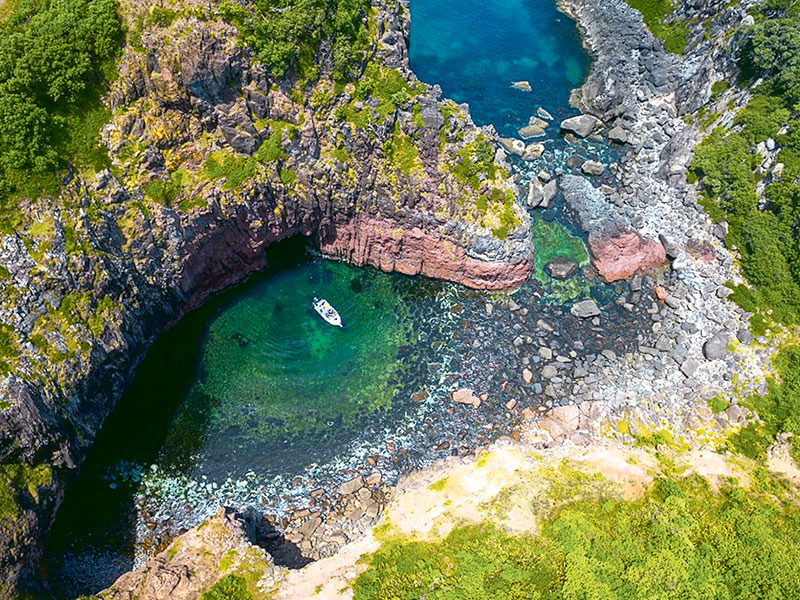New fishing rules in place at Great Mercury Island
2 min read
Great Mercury Island lies 8km off the north-eastern coast of The Coromandel. Photo: Destination Coromandel
Biosecurity New Zealand has placed legal controls over the western bays of Ahuahu Great Mercury Island in a bid to prevent the spread of an introduced pest seaweed found there.
The requirements cover the western bay area of Great Mercury Island between Ahikopua Point and Maunganui Point.
Under what’s called a Controlled Area Notice, it is now illegal to take any marine life (fish, shellfish, crays, seaweed) from this area. In addition, any vessel operators that have anchored in the controlled area must thoroughly clean their boat’s anchor and chain before leaving the zone. Any equipment used for water-based activities in the area (such as kayaking and swimming) must be thoroughly cleaned before being re-used.
Mana whenua for the island, Ngāti Hei, are enacting a rāhui over the same area.
The seaweed Caulerpa parvifolia was recently found in the waters between Paritu Point and Pukekoromiko Point. It is one of two almost identical Caulerpa species (the other is Caulerpa brachypus) that are already present in three harbours at Aotea Great Barrier Island. Biosecurity New Zealand has been working with the iwi and community there in response.
A Controlled Area Notice for Aotea Great Barrier Island is already in place and remains in force with similar restrictions on fishing and boating activities in three harbours – Tryphena, Whangaparapara, and Blind Bay. There are no changes to the rules there.
Biosecurity New Zealand’s director of response, John Walsh, says the original CAN has been modified to include the new controlled area at Great Mercury Island.
“These exotic Caulerpa are invasive species that can spread quickly, forming dense mats,” he said.
“We know they can be moved to new locations as fragments on an anchor or marine equipment that has been in contact with the seafloor. This is why it is so important that people comply with the rules.
Walsh said it is not known how this pest arrived in New Zealand waters, but it is likely to have been on a visiting vessel’s anchor or fishing equipment.
“While we determine how best to tackle this long-term, our approach is to prevent exotic Caulerpa spreading to other areas of our coastline,” he said.
“I encourage boaties to understand the rules and comply with them to help preserve the marine environment they so value.”
The rules do not stop people boating in and enjoying these waters. People can still sail through the harbours, swim or dive, paddleboard, or kayak and launch vessels from the shore there to go fishing in other areas of the islands.



